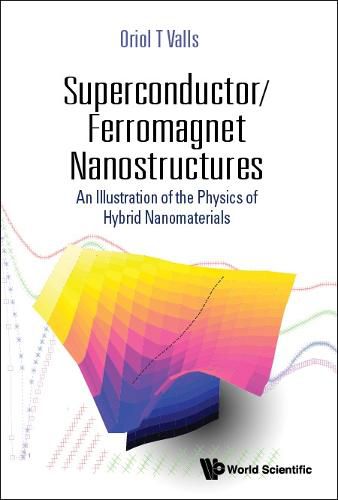Readings Newsletter
Become a Readings Member to make your shopping experience even easier.
Sign in or sign up for free!
You’re not far away from qualifying for FREE standard shipping within Australia
You’ve qualified for FREE standard shipping within Australia
The cart is loading…






This title is printed to order. This book may have been self-published. If so, we cannot guarantee the quality of the content. In the main most books will have gone through the editing process however some may not. We therefore suggest that you be aware of this before ordering this book. If in doubt check either the author or publisher’s details as we are unable to accept any returns unless they are faulty. Please contact us if you have any questions.
It used to be difficult to reliably fabricate clean heterostructures using magnetic and superconducting layers. Today this is no longer the case; such reproducible superconductor/ferromagnet heterostructures enable the quantitative study of the rich and varied phenomena associated with ferromagnet/superconductor proximity effects. These structures are eminent, suitable candidates for many switching devices, ranging from non-volatile low power memory elements to quantum computing applications involving Josephson junctions.This book’s main purpose is to explain how the equilibrium and transport properties of these heterostructures can be accurately calculated starting from a standard BCS type Hamiltonian. The main techniques, including both analytical and numerical methods, are discussed in detail. Results obtained from these calculations are shown to be in excellent quantitative agreement with experiment.This is a theory book, but the theory is neither abstruse nor esoteric. Knowledge of only introductory graduate physics has been assumed; a solid undergraduate training and a bit of perseverance would also be enough. This book can easily be read and understood by experimentalists, and just about anybody can grasp the basics by referring to the figures and explanations. Quite apart from the manifold applications of superconductor/ferromagnet nanostructures, studying them provides us with considerable insights into fundamental physics and the general study of hybrid nanomaterials.
$9.00 standard shipping within Australia
FREE standard shipping within Australia for orders over $100.00
Express & International shipping calculated at checkout
This title is printed to order. This book may have been self-published. If so, we cannot guarantee the quality of the content. In the main most books will have gone through the editing process however some may not. We therefore suggest that you be aware of this before ordering this book. If in doubt check either the author or publisher’s details as we are unable to accept any returns unless they are faulty. Please contact us if you have any questions.
It used to be difficult to reliably fabricate clean heterostructures using magnetic and superconducting layers. Today this is no longer the case; such reproducible superconductor/ferromagnet heterostructures enable the quantitative study of the rich and varied phenomena associated with ferromagnet/superconductor proximity effects. These structures are eminent, suitable candidates for many switching devices, ranging from non-volatile low power memory elements to quantum computing applications involving Josephson junctions.This book’s main purpose is to explain how the equilibrium and transport properties of these heterostructures can be accurately calculated starting from a standard BCS type Hamiltonian. The main techniques, including both analytical and numerical methods, are discussed in detail. Results obtained from these calculations are shown to be in excellent quantitative agreement with experiment.This is a theory book, but the theory is neither abstruse nor esoteric. Knowledge of only introductory graduate physics has been assumed; a solid undergraduate training and a bit of perseverance would also be enough. This book can easily be read and understood by experimentalists, and just about anybody can grasp the basics by referring to the figures and explanations. Quite apart from the manifold applications of superconductor/ferromagnet nanostructures, studying them provides us with considerable insights into fundamental physics and the general study of hybrid nanomaterials.